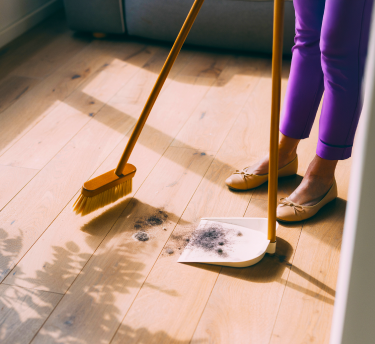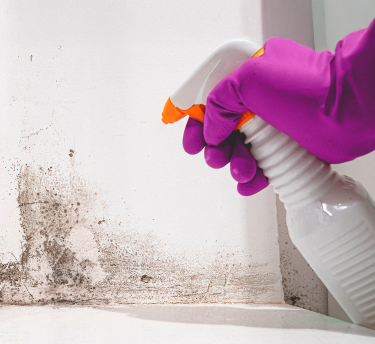Dust allergies are especially common in people who have a sensitivity to house dust mites. These tiny creatures live in many homes and can cause skin irritation and an allergic response in people with sensitive skin.


Everything you need to know about mould allergies
What Are Mould Allergies?
Mould allergies are caused by exposure to mould spores — microscopic particles that can be found both indoors and outdoors. These spores are released into the air by fungi that feed on organic material such as wood or plants. When you inhale these spores, your immune system could mistake them for a foreign invader and releases histamines into your bloodstream in an attempt to fight off the “invasion”.1 This is what triggers an allergic reaction in some people, causing a variety of symptoms which range from mild to severe.
How Many People Have an Allergy to Mould?
Up to 50% of Australian homes have some mould or dampness issue with an increase in prevalence when located close to bodies of water, coastal areas or previously flood-affected locations.
Poor housing conditions and mould contribute to higher risks of allergies and other health problems, showing that disadvantaged Australians face greater health impacts linked to housing quality.3
Mould Allergy Symptoms
The symptoms of mould allergy may include sneezing, runny nose, blocked nose, watery, itchy eyes, and an urticarial rash (red, itchy and swollen) at the site where the individual has come into contact with mould.2 If you experience any of these symptoms regularly (especially if they occur when exposed to damp environments) then it is important to speak to your doctor about whether you may have a potential mould allergy.
Mould Allergy Treatment
The best way to treat a mould allergy is through avoidance — this means reducing your exposure to mould spores as much as possible. Avoiding exposure to mould in your home is as simple as keeping it as clean and dry as possible. If your home has areas with high levels of mould growth then it’s important that you take steps right away to remove it and make sure it doesn’t come back. You may also want to consider investing in an air purifier or dehumidifier which can help reduce the amount of airborne particles in your home which could trigger an allergic reaction.4
Make sure that damp areas like basements, sheds, garages, and bathrooms are regularly cleaned with anti-mould products. Additionally, some medications such as Telfast contain antihistamines, which can help reduce your symptoms if needed.
With many Australians suffering from mould allergies each year it's important for everyone to be aware of the signs and symptoms so they can take steps towards managing their condition effectively. Through avoiding contact with mould spores whenever possible — along with using ventilation systems in damp areas — you can reduce your risk of experiencing symptoms due to a sensitivity to mould.5
If you suspect you may have a mould allergy, speak with a medical professional so they can help diagnose your condition accurately and provide appropriate treatment options for relief from discomforting symptoms associated with this common type of allergen sensitivity.
Related articles